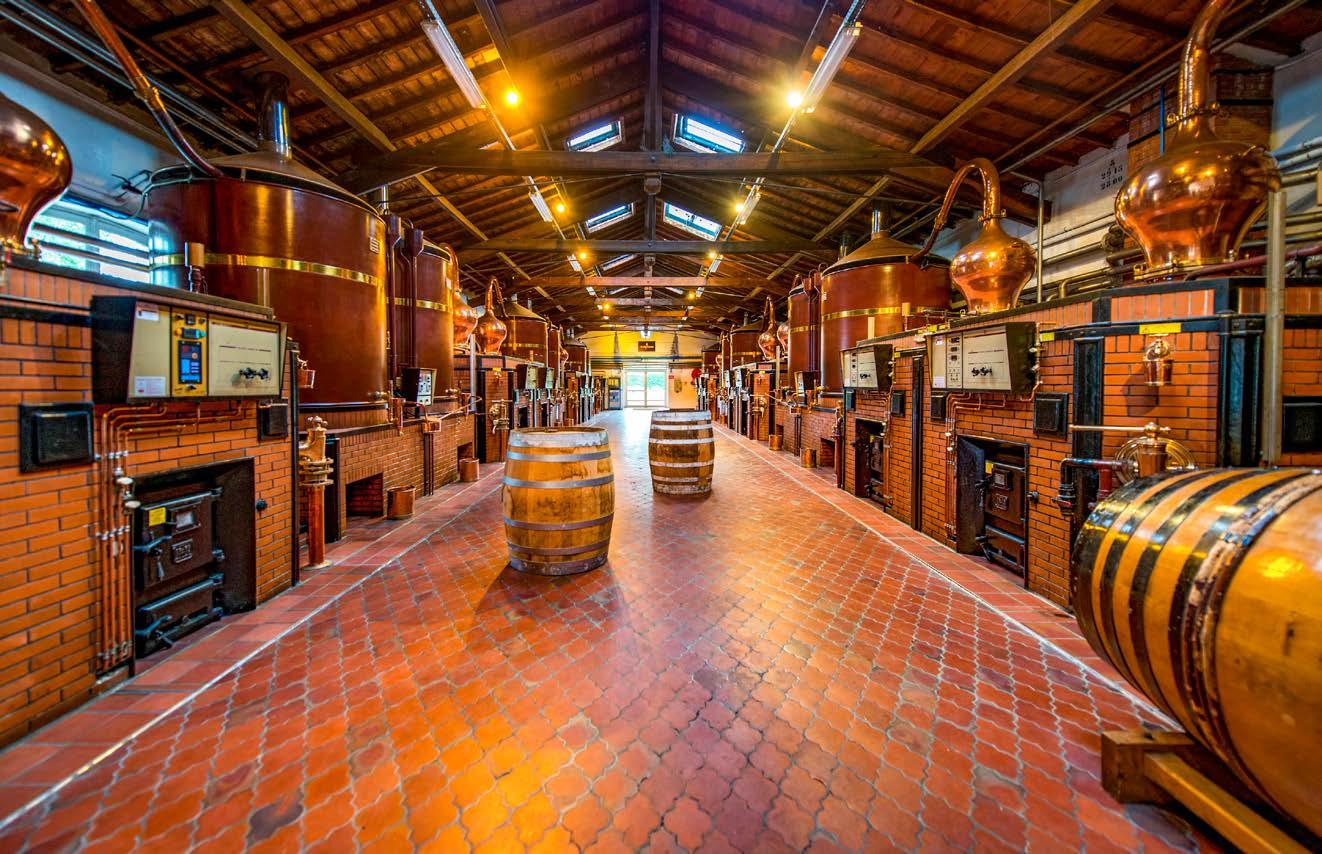
2 minute read
COGNAC
COGNAC
By Amber Gibson
A REFINED FRENCH SPIRIT
The noblest of French brandies, cognac is more versatile than you might think – and Cognac, France, is a beautiful agritourism destination to visit any time of year.
A symbol of French luxury for centuries, cognac continues to inspire bartenders around the world today. It’s the spirit of choice in classic cocktails like the French 75, Sidecar, and Sazerac. If you’re curious to learn more about the drink, Cognac is a beautiful region and easily accessible via train from Paris. In just a few hours, you’re far from the city, north of Bordeaux, in a peaceful landscape that’s home to more vines than people. Summer is the busy tourist season, but the Cognac experience in winter is more intimate and exclusive since visitors can see first-hand the distilling process. By law, distilling may only occur from November through March in order to preserve the quality of the grape juice.
FAMOUS COGNAC HOUSES

Charente River in Cognac, France
The four biggest cognac houses that you’ll find are Hennessy, Martell, Rémy Martin, and Courvoisier. All have tours available to the public, but it’s Courvoisier that has the strongest French heritage. Visit the museum at its chateau and learn how it was the imperial supplier to Napoleon’s court and served at the Eiffel Tower inauguration in 1889. Courvoisier offers some pretty special tasting experiences too, allowing guests to bottle their own eau de vie straight from the barrel to bring home.

Courvoisier Cognac House
This precious juice hasn’t yet been blended and is something you can’t find in stores. It’s quite strong though, so consider sipping it over ice or mixing it with tonic or ginger ale in a refreshing cocktail. At the Tonnellerie Doreau cooperage, a team of strong local men work year-round to craft oak barrels for aging cognac, wine, and bourbon. It’s a noisy and hectic assembly line environment, but the freshly toasted barrels smell like a bakery at Christmas. It’s a true team effort between grape growers, distillers, master blenders, and coopers to create Cognac’s liquid gold.
UNDERSTANDING THE LABELS

French 75 cocktail with a lemon twist
Cognac has been producing spirits since the 16th century when the Dutch introduced the process of brandy distillation; a process the French refined with double distillation. The traditional spirit from Western France has been protected as an Appellation d’Origine Contrôlée (AOC) since the 1930s. That means cognac can only be produced in the 186,000-acre Cognac region, almost always from the Ugni Blanc grape. Brandy, on the other hand, encompasses any spirit distilled from fruit juice. Freshly distilled eau de vie (the spirit before it is aged) must be aged a minimum of two years in oak before it can be called cognac.
In VS (Very Special) cognac, the youngest eau de vie is at least two years old – this category is most popular. Eau de vie in V.S.O.P. (Very Superior Old Pale) is at least four years old. In X.O. (Extra Old) cognac, the youngest eau de vie must be aged for at least 10 years, making it the most complex of the bunch, and more suitable for sipping and savouring as opposed to mixing in cocktails. As cognac ages, the fresh, fruity flavours of apples and pears transition to stone fruit, vanilla and finally gingerbread and candied orange notes. For those allergic to sulfites, cognac is safe since it cannot be distilled from wine that contains added sulfites.










